When I first installed concrete countertops in my kitchen, I was captivated by their unique, industrial look. Concrete countertops are incredibly versatile and can be customized in numerous ways, from color to texture to shape. However, as much as I loved the aesthetic, I quickly learned that maintaining their pristine appearance required some effort, particularly when it came to stain removal. Concrete, while durable, is porous and can absorb spills, leading to stubborn stains if not properly cared for. Understanding how to effectively remove stains from concrete countertops has become an essential part of my home maintenance routine.
Concrete countertops are often sealed to protect against staining, but over time, the sealant can wear down, making the surface more susceptible to stains. One of the first lessons I learned was the importance of resealing the countertops regularly to maintain their protective barrier. Despite my best efforts, spills do happen, and knowing how to tackle them quickly and effectively can make all the difference. Each type of stain, whether from food, beverages, or oils, requires a specific approach to remove it without damaging the concrete.
For organic stains like coffee, wine, or food spills, a mixture of baking soda and water works wonders. I create a paste by combining these two ingredients and apply it directly to the stain. After letting it sit for a few minutes, I gently scrub the area with a soft brush or sponge, taking care not to scratch the surface. Rinsing with warm water and wiping dry usually does the trick. This method is effective for fresh stains but might need a few repetitions for older, set-in stains.
Oil and grease stains can be particularly challenging to remove from concrete countertops. These substances penetrate deeply into the pores of the concrete, making them resistant to surface cleaning methods. I found that using a poultice made from baking soda and a few drops of dish soap can draw out the oil. Applying the paste to the stain and covering it with plastic wrap helps to keep it moist, allowing it to work more effectively. Leaving it overnight and then wiping it away in the morning often results in significant improvement.

For more persistent oil stains, I’ve had success using commercial degreasers specifically designed for concrete. These products are formulated to break down oil and grease, making them easier to remove. Following the manufacturer’s instructions is crucial, as some degreasers can be harsh and may require careful handling. Always test a small, inconspicuous area first to ensure there’s no adverse reaction with the concrete.
Acidic substances like vinegar, citrus juices, and tomato sauce can etch the surface of concrete, leaving dull spots that are difficult to remove. When dealing with these types of stains, I use a mixture of water and mild detergent to neutralize the acid before it has a chance to cause damage. After cleaning, I rinse the area thoroughly and dry it completely. If etching has already occurred, a light sanding with fine-grit sandpaper can sometimes restore the surface, followed by resealing to protect against future damage.
Rust stains from metal objects left on the countertop can also be troublesome. These stains are often reddish-brown and can be quite stubborn. I’ve found that using a mixture of lemon juice and salt can help lift rust stains. Applying the mixture to the stain and allowing it to sit for several minutes before scrubbing with a soft brush usually yields good results. For more severe rust stains, a commercial rust remover may be necessary, but again, it’s important to test a small area first.
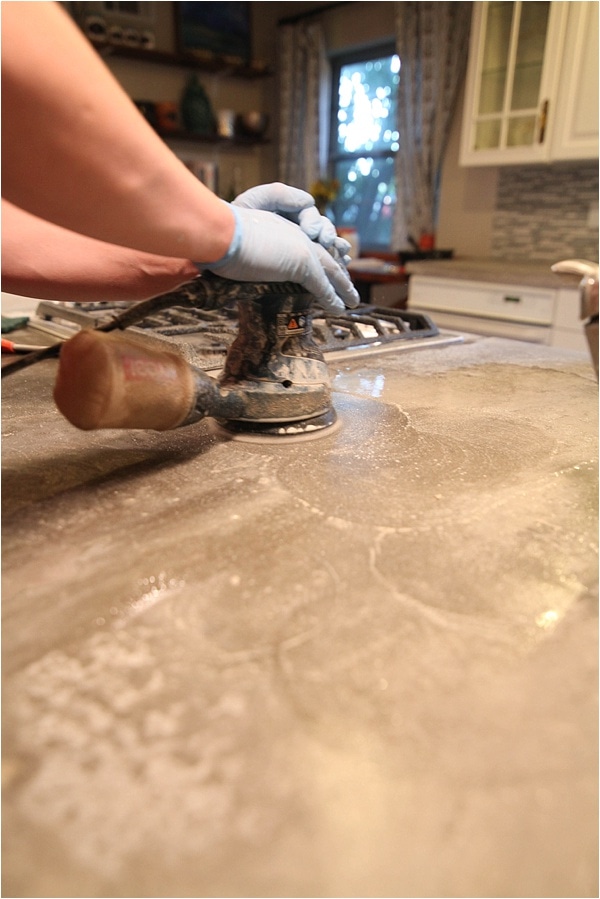
Ink and dye stains, such as those from markers or hair dye, require a different approach. A mixture of hydrogen peroxide and baking soda can effectively lift these stains. Applying the mixture and allowing it to sit for a few minutes before scrubbing gently can help remove the discoloration. Rinsing thoroughly and drying the area afterward is essential to prevent further absorption of the stain.
Preventing stains from setting in is always easier than removing them. I’ve made it a habit to wipe up spills immediately and to use coasters, trivets, and cutting boards to protect the countertop surface. Regularly cleaning the countertops with a pH-neutral cleaner helps to maintain their appearance and prolong the life of the sealant. Avoiding harsh chemicals and abrasive cleaners is crucial, as these can damage the sealant and the concrete itself.
Resealing the countertops periodically is a key part of maintenance. Depending on the type of sealant used, this might need to be done every six months to a year. A high-quality sealant provides a protective barrier against stains and makes cleaning much easier. I always follow the manufacturer’s recommendations for application and curing times to ensure the best results.
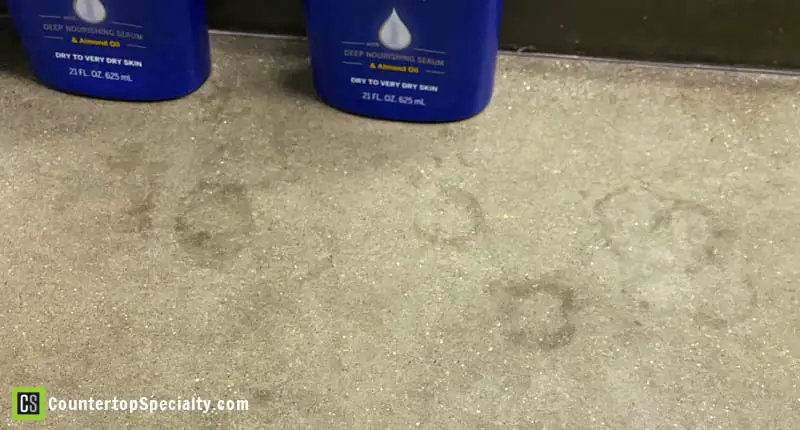
In cases where stains have set in deeply or the concrete has been etched, professional help might be necessary. Professional cleaners and restorers have access to specialized tools and products that can address severe staining and damage. They can also provide advice on the best sealants and maintenance practices to keep the countertops looking their best.
Learning how to remove stains from concrete countertops has been a valuable experience. It requires patience and the right techniques, but the results are well worth the effort. Concrete countertops can be a stunning addition to any kitchen, combining durability with a unique aesthetic. Proper care and maintenance ensure that they remain a beautiful and functional part of the home for many years.
Despite the challenges, I’m still in love with my concrete countertops. The industrial-chic look they bring to my kitchen is unmatched, and knowing how to care for them gives me confidence that they’ll stay looking great. The key is to address spills and stains promptly, use the right cleaning methods, and maintain the protective sealant. With these practices in place, concrete countertops can be both beautiful and practical.

Common Mistakes to Avoid
One common mistake is neglecting to reseal concrete countertops regularly. The sealant protects the concrete from stains and damage, and letting it wear down can leave the surface vulnerable. It’s important to follow a consistent resealing schedule based on the type of sealant used.
Another error is using harsh chemicals or abrasive cleaners on concrete countertops. These substances can damage the sealant and the concrete itself, leading to increased staining and wear. Always use pH-neutral cleaners and gentle scrubbing tools to maintain the surface.
Failing to clean up spills immediately is another pitfall. Concrete is porous and can absorb liquids quickly, making stains more difficult to remove if left to sit. Promptly wiping up spills can prevent many stains from setting in.
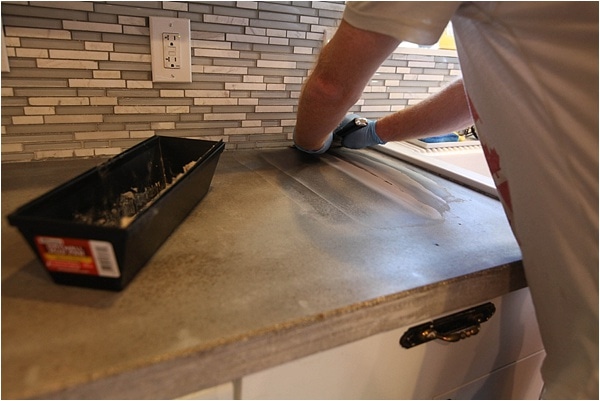
Using inappropriate stain removal techniques can also cause problems. Different stains require different approaches, and using the wrong method can sometimes make the stain worse or damage the concrete. Researching and applying the correct technique for each type of stain is crucial.
Ignoring the importance of using protective accessories like coasters, trivets, and cutting boards can lead to increased wear and staining. These simple tools can help protect the countertop from spills, heat, and scratches, preserving its appearance and functionality.
Lastly, attempting to fix severe stains or damage without professional help can result in further damage. Professionals have the tools and expertise to address deep stains and restore the surface properly. Knowing when to call in a pro can save time, effort, and potential repair costs.

How can I remove oil stains from my concrete countertop?
Oil stains can be particularly challenging to remove from concrete countertops because oil penetrates deeply into the pores. One effective method is to use a poultice made from baking soda and a few drops of dish soap. Apply the paste to the stain, cover it with plastic wrap, and leave it overnight. In the morning, wipe away the paste and rinse the area with warm water. For more persistent stains, a commercial degreaser designed for concrete can be used. Always follow the manufacturer’s instructions and test a small area first to ensure there is no adverse reaction with the concrete.
What is the best way to remove rust stains from concrete countertops?
Rust stains from metal objects can be stubborn but can be treated with a mixture of lemon juice and salt. Apply the mixture to the rust stain and allow it to sit for several minutes. Scrub gently with a soft brush, then rinse thoroughly with water and dry the area. For more severe rust stains, a commercial rust remover may be necessary. It’s important to test the product on a small, inconspicuous area first to ensure it doesn’t damage the concrete.
How do I prevent stains on my concrete countertops?
Preventing stains on concrete countertops involves a combination of regular maintenance and protective measures. Immediately wiping up spills, using coasters, trivets, and cutting boards can help protect the surface. Regularly cleaning the countertops with a pH-neutral cleaner and avoiding harsh chemicals or abrasive cleaners is also crucial. Additionally, resealing the countertops periodically, based on the type of sealant used, provides a protective barrier against stains and makes cleaning easier.
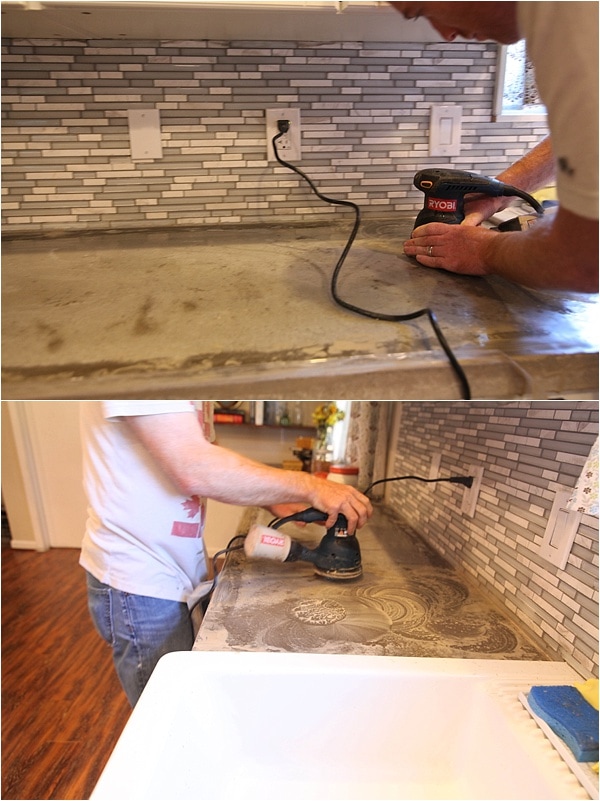
Can I use vinegar to clean my concrete countertops?
Vinegar is acidic and can etch the surface of concrete countertops, leaving dull spots and potential damage. It’s best to avoid using vinegar for cleaning concrete. Instead, opt for a pH-neutral cleaner that is specifically designed for use on concrete surfaces. These cleaners are gentle and effective, maintaining the integrity of the sealant and the concrete itself.
How often should I reseal my concrete countertops?
The frequency of resealing concrete countertops depends on the type of sealant used and the level of use the countertops experience. Generally, it’s recommended to reseal every six months to a year. A high-quality sealant provides a protective barrier against stains and damage. Following the manufacturer’s recommendations for application and curing times ensures the best results and longevity of the sealant.
What should I do if a stain is not coming out with home remedies?
If a stain on your concrete countertop is not coming out with home remedies, it may be time to seek professional help. Professional cleaners and restorers have access to specialized tools and products that can address deep stains and restore the surface. They can also provide advice on the best sealants and maintenance practices to keep your countertops looking their best. Attempting to fix severe stains or damage without professional help can result in further damage, so knowing when to call in a pro can save time, effort, and potential repair costs.

How To Get Stains Out of Concrete Countertops
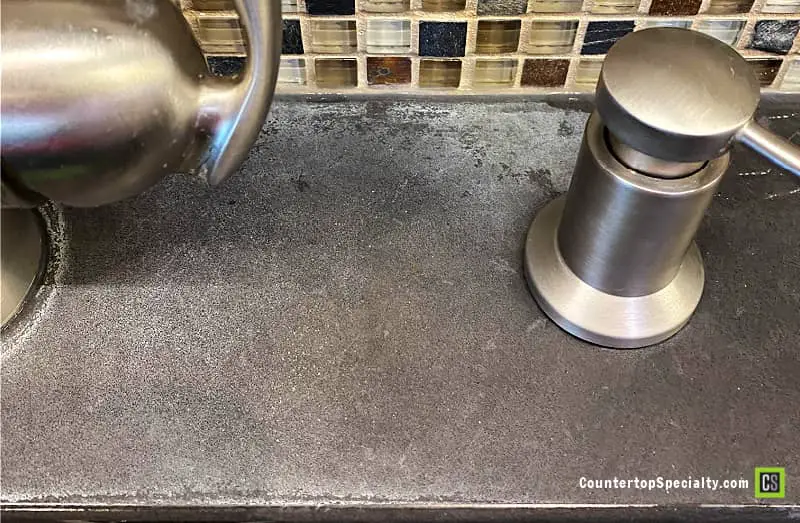
Related articles:
- Concrete Countertop Overlay
- Black Concrete Countertops
- Marble Look Concrete Countertops
- Light Grey Concrete Countertops
- Concrete Countertop Design Ideas
- Light Colored Concrete Countertops
- Epoxy On Concrete Countertop
- Concrete Countertops Designs
- Concrete Countertops That Look Like Wood
- White Concrete Countertops